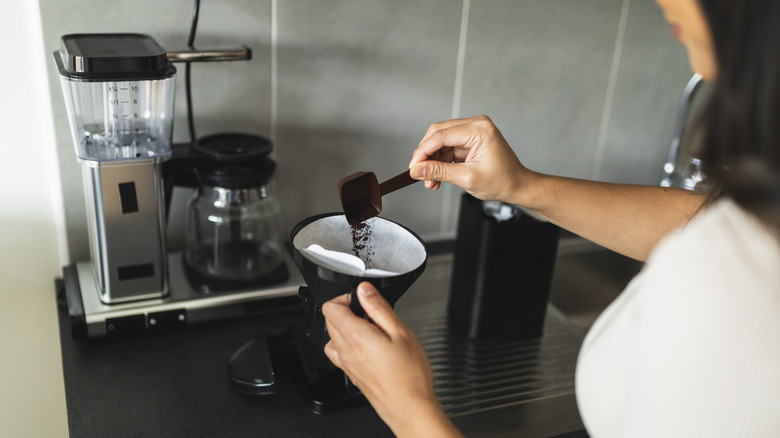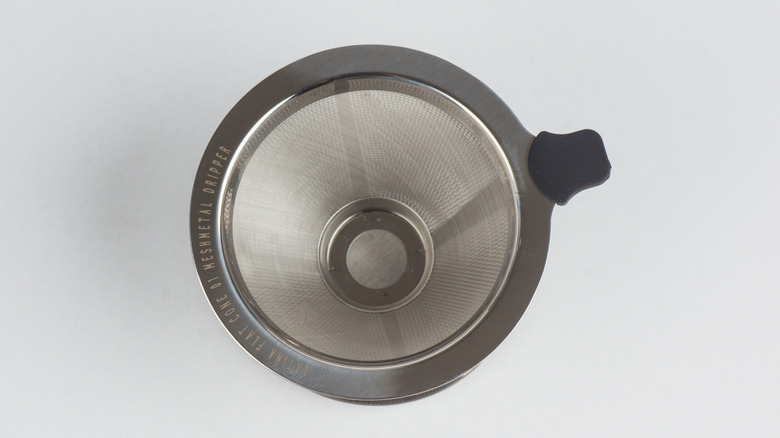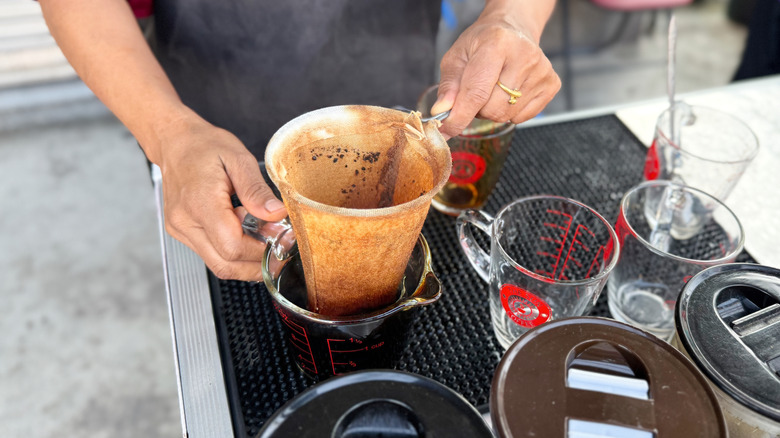Does The Type Of Coffee Filter You Use Matter?
Many foodies are particular about their food, but perhaps no category of consumers are as regimented about their substance of choice as coffee drinkers. Admittedly, it's reasonable. We rely on the caffeine kick to start — and oftentimes, prolong — our days, and without the best cup of coffee, we have a grumpy start to our day. Hence why there are so many steps to land an optimal cup of coffee in the palm of your hands.
One step to score the coffee of your (very much awake) dreams is choosing the ideal filter. Matt Woodburn-Simmonds, coffee expert and co-leader of Home Coffee Expert, helped us filter through the different types to get us on track for that perfect brew. Woodburn-Simmonds outlined the three different kinds of coffee filters: metal, cloth, and paper. Though you can certainly brew a batch of coffee without a filter (and without a coffee maker, for that matter), all three types of filters result in a nice cup of coffee, but the specific qualities of the final result depends on which filter you use. Each will give you a spike of energy but each also comes with its own set of pros and cons. Let's dive in.
The pros
Matt Woodburn-Simmonds said metal filters came on the map because they are both an environmentally sound and cost-conscious way of brewing coffee. "Metal filters are reusable, so one-off cost then off you go," he wrote in a statement to The Takeout. They also don't impart unwanted flavors into the final brew. "Metal filters are the most inert, so [they] won't impact the flavor or aroma," he said. Similarly, cloth filters are reusable — and they restrict the passage of coffee particles well.
On the other hand, paper filters — which are not reusable — are best at keeping bits of coffee grounds from entering the brew, producing a smooth and clean finish. "Paper filters give you the cleanest cup with no sediment and bright flavors," Woodburn-Simmonds said. "No cleaning required."
In terms of their applications, paper and metal filters tend to be employed for the same brewing methods, such as pour-over and AeroPress. Some traditional brewing methods in Central America and Southeast Asia use cloth filters, he added.
The cons
While metal filters are cost-effective and ecologically safe, they are the least permeable, meaning they are the most susceptible to coffee grounds ending up in your brew. "The coffee can have a little bit of a 'muddy' texture to it," Matt Woodburn-Simmonds said. They also require cleaning after each use. Similarly, using cloth filters involves constant cleaning. "Cloth filters let less particles through, but need to be washed thoroughly and frequently to ensure coffee residue on the cloth isn't impacting the flavor of the brewed coffee," he said. "They also tend to look nasty, but that unavoidable coffee staining shouldn't really make a difference to the flavor." He also said that cleaning them results in coffee grounds spilling everywhere.
Paper filters also require some maintenance. Before adding the coffee grounds, you have to rinse the filters to avoid any residual paper flavor entering your coffee. Additionally, given that they aren't reusable, they necessitate constant disposing and replenishing. "They have to be binned (many are compostable) and you have to keep buying more," Woodburn-Simmonds said.


